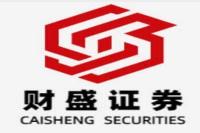Reimagining Urban Skylines: Revitalizing Aging Commercial Buildings in a Changing World
Meta Description: Explore the global challenge of aging commercial buildings, focusing on innovative solutions, policy implications, and technological advancements transforming urban landscapes in Shanghai, New York, and Tokyo. Discover expert insights on urban renewal, building modernization, and smart building technologies.
Wow! Have you noticed how many towering skyscrapers are starting to show their age? It's not just a cosmetic issue – we're talking about the massive economic and social impact of aging commercial buildings in our major cities. From Shanghai's ambitious redevelopment plans to New York's creative repurposing of office spaces, the global conversation about urban renewal is heating up. This isn't just about patching up cracks in the facade; it's about reimagining entire urban ecosystems, adapting to shifting demographics, and capitalizing on the unique potential of these often prime locations. We're diving deep into the complexities of this challenge, examining effective strategies from around the world, and uncovering the innovative technologies transforming how we approach urban revitalization. This isn't your grandpappy's urban planning—get ready to explore the future of our cities, one building at a time! We'll uncover the hurdles, celebrate the successes, and even offer some actionable advice for anyone invested in this crucial urban transformation. So, buckle up, because this is going to be a fascinating journey!
The Urban Renewal Imperative: Addressing Aging Building Stock
The rapid pace of economic and societal change has left many cities grappling with a growing problem: a significant portion of their commercial building stock is aging and becoming increasingly inefficient. This isn't limited to a single city; it's a global phenomenon. From the bustling streets of Shanghai to the iconic skyline of New York City, aging high-rises are facing a crossroads. Many of these buildings, constructed decades ago, now struggle to meet the demands of modern businesses and residents. This isn't just about aesthetics; it's about functionality, efficiency, and the overall vibrancy of our urban centers.
The core issue is a mismatch between the existing building infrastructure and the evolving needs of modern urban life. Outdated building codes, aging infrastructure (think leaky pipes and inefficient HVAC systems – ugh!), and a lack of modern amenities are all major factors contributing to decreased building appeal and functionality. In many cases, these buildings are simply not equipped to accommodate the demands of today's tech-savvy workforce or the changing preferences of urban dwellers. For example, many older buildings lack the robust IT infrastructure needed by modern businesses, while others fall short in terms of accessibility and sustainability features. The result? High vacancy rates, lost revenue, and ultimately, a drag on economic growth.
Case Studies: Global Approaches to Urban Renewal
Let's take a look at how different cities are tackling this challenge:
-
Shanghai, China: The recent release of policy documents underscores a proactive approach to urban renewal. Shanghai recognizes the need to revitalize its aging building stock, focusing on enhancing efficiency and adapting to changing urban dynamics. The city's approach emphasizes comprehensive planning and collaboration across various stakeholders, including government agencies, developers, and building owners.
-
New York City, USA: New York has been a pioneer in adaptive reuse, particularly converting older office buildings into residential spaces. This strategy not only addresses the issue of vacant office space but also contributes to addressing the city's housing shortage. Incentives like tax breaks and government subsidies play a key role in attracting private investment for these projects. The conversion of nearly 80 office buildings into residential units in the last two decades showcases the remarkable scale of this initiative.
-
Tokyo, Japan: Tokyo's approach is particularly holistic, integrating building renewal into larger urban revitalization strategies. The "Tokyo Great Transformation 2030" initiative, for example, showcases a vision of integrated urban development, focusing on creating mixed-use spaces that blend commercial, residential, and public amenities seamlessly. The Sakura Stage project, with its incorporation of kindergartens and medical facilities within a renovated building, highlights this forward-thinking approach.
The Challenges of Urban Renewal: A Multifaceted Problem
While the benefits of urban renewal are undeniable, the process itself presents significant challenges. These challenges span multiple sectors, including:
-
High Costs: Renovating or repurposing aging buildings can be incredibly expensive. The financial burden often deters building owners from undertaking such projects without sufficient incentives.
-
Regulatory Hurdles: Navigating complex building codes and regulations can be a time-consuming and costly process. Streamlining these processes is crucial to encouraging building owners to invest in upgrades.
-
Coordination Challenges: Urban renewal projects often require the coordination of multiple stakeholders, from city planners to building owners and contractors. Effective communication and collaboration are vital for success.
-
Lack of Expertise: Finding experienced professionals with the expertise to manage complex urban renewal projects can be a significant hurdle. Investing in training and education in this area is essential.
Smart Building Technologies: The Future of Urban Renewal
The integration of smart building technologies plays a pivotal role in modernizing aging buildings. These technologies offer a range of benefits, including:
| Technology | Benefits |
|-----------------------|-----------------------------------------------------------------------------|
| Building Management Systems (BMS) | Enhanced energy efficiency, streamlined maintenance, improved security |
| Cloud Computing | Data-driven insights for optimized building operations, reduced energy costs |
| Big Data Analytics | Predictive maintenance, improved resource allocation, enhanced tenant experience |
| Internet of Things (IoT) | Real-time monitoring, automated control systems, personalized building experiences |
Smart building technologies not only improve efficiency and reduce operating costs but also enhance the overall tenant experience. Features like personalized climate control, smart lighting, and integrated security systems can make a building much more attractive to potential occupants.
Strategies for Successful Urban Renewal
To make urban renewal truly successful, a multi-pronged approach is necessary:
-
Policy and Regulatory Support: Governments play a critical role in incentivizing urban renewal through tax breaks, grants, and streamlined regulations. Clear guidelines and standardized processes can significantly reduce the bureaucratic hurdles faced by building owners.
-
Public-Private Partnerships: Collaborations between public and private sectors can leverage the resources and expertise of both to execute successful projects. Shared risk and reward models can encourage investment in complex renewal initiatives.
-
Focus on Sustainability: Prioritizing sustainable building practices is crucial for long-term viability. Retrofitting buildings with energy-efficient technologies can significantly reduce their carbon footprint and operational costs.
-
Community Engagement: Engaging local communities in the planning and execution of urban renewal projects is essential. Incorporating community input can ensure that the projects meet the needs and preferences of the residents and businesses in the area.
Frequently Asked Questions (FAQs)
Q1: How much does urban renewal cost?
A1: The cost of urban renewal varies greatly depending on the size and scope of the project. Factors such as the building's age, condition, and desired upgrades all significantly impact the overall cost.
Q2: Who is responsible for financing urban renewal projects?
A2: Financing can come from a variety of sources, including government grants, private investment, and loans. Public-private partnerships are often utilized to share the financial burden and leverage the resources of different stakeholders.
Q3: How long does an urban renewal project take?
A3: The timeframe for an urban renewal project can range from several months to several years, depending on the complexity of the project. Larger-scale projects with significant renovations will naturally take longer to complete.
Q4: What are the potential benefits of urban renewal?
A4: Urban renewal can lead to increased property values, improved building efficiency, enhanced community amenities, and a more vibrant urban environment. It can also help to attract new businesses and residents to an area.
Q5: What are the potential risks of urban renewal?
A5: Risks can include cost overruns, delays, and unforeseen complications during construction. Thorough planning and risk assessment are crucial for mitigating these potential problems.
Q6: How can building owners participate in urban renewal efforts?
A6: Building owners can participate by seeking out government incentives, collaborating with developers and contractors, and exploring innovative financing options. They can also invest in modernizing their buildings with energy-efficient technologies and smart building systems.
Conclusion: A Vision for the Future of Urban Spaces
The revitalization of aging commercial buildings presents a crucial opportunity to reshape our urban landscapes. By embracing innovative technologies, fostering collaboration, and enacting supportive policies, we can transform these aging structures into vibrant hubs of activity, contributing to a more sustainable, resilient, and economically thriving future for our cities. The journey will undoubtedly have its challenges, but the potential rewards – both economically and socially – make the effort worthwhile. It’s time to move beyond simply maintaining the status quo and embrace a vision of truly dynamic and adaptive urban environments. Let's build a better future, one building at a time.



